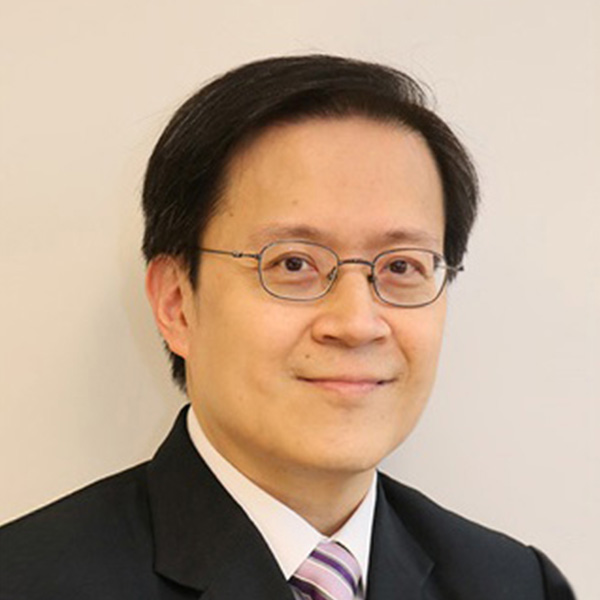
Abstract Metal-containing polymers represent an important research field due to their combination of unique and intriguing redox, electronic, magnetic, optical, and catalytic properties and their ability to be easily processed and fabricated into thin films, fibers, and other forms. As these metallopolymers can be readily shaped and patterned using various lithographic techniques, they offer a convenient synthetic access to patterned arrays of metal NPs with control of their composition and density per unit area. In the first part of this talk, the advances in developing new functional organometallic polyyne polymers as precursors to magnetic metal alloy nanoparticles and their lithographic patterning studies will be presented. These metallated polymers (both main-chain and side-chain polymers) are promising as building blocks in realizing high-density magnetic data storage media where the convenient and rapid patterning of magnetic NPs is highly desirable. The bottom-up synthesis of functional 2D metallopolymers from molecular precursors will also be presented in the second part and the resulting metal-complex nanosheets are shown to find wide applications in optoelectronics and catalysis. References
BiographyWai-Yeung Wong (Raymond) obtained his B.Sc.(Hons.) and Ph.D. degrees from the University of Hong Kong. After postdoctoral works at Texas A&M University (Advisor: Prof. F. A. Cotton) and the University of Cambridge (Advisors: Profs. Lord Lewis and P. R. Raithby), he joined Hong Kong Baptist University from 1998 to 2016 and he now works at the Hong Kong Polytechnic University as Chair Professor of Chemical Technology and Dean of Faculty of Applied Science and Textiles. He is currently the Chairman of Hong Kong Chemical Society and the Editor/Associate Editor of Journal of Materials Chemistry C, Journal of Organometallic Chemistry and Topics in Current Chemistry. He was awarded the RSC Chemistry of the Transition Metals Award, FACS Distinguished Young Chemist Award, State Natural Science Award from China and RGC Senior Research Fellow Award, etc. His research focuses on synthetic inorganic/organometallic chemistry, especially aiming at developing metal-organic molecules and polymers for organic optoelectronics and metal-based nanomaterials.
AbstractUtilization of polymers as biomaterials has greatly impacted the advancement of modern medicine. Specifically, biodegradable polymers provide the significant advantage of being able to be broken down and auto-removed after they have served their function. Polyesters comprise the earliest and most extensive investigation as biomaterials, showing excellent biocompatibility and controllable degradation by simple hydrolysis and/or enzymatic reactions in aqueous environments such as body fluids. Polyesters and their functionalized polymeric materials are seen as promising alternatives to clinically established products. In this talk, Dr. Li would like to share his team’s recent work in functionalizing polyesters into amphiphilic copolymers and their various self-assembly system towards more advanced therapeutic applications, including stimuli-responsive carriers for controlled drug-, gene-, co/delivery and bio-imaging etc. References
BiographyDr Li Zibiao is the Director of the Sustainable Polymers division at Institute of Sustainability for Chemicals, Energy and Environment (ISCE2), A*STAR and he has a joint appointment at Institute of Materials Research and Engineering (IMRE). Zibiao obtained his PhD in Biomedical Engineering from the National University of Singapore (NUS) in 2014. His research interests focus on materials sustainability and MedTech polymers for healthcare applications. He has more than 200 publications and 30 Technology Disclosures in the interdisciplinary field of polymers, with a total citation of > 6500 since 2017 and H-index of 48. He is a recipient of the A*STAR Advanced Manufacturing and Engineering (AME) Young Individual Research Grant (YIRG), Central Research Fund (CRF) in Use-Inspired-Basic-Research (UIBR) and Program Director of circular plastic materials.
Abstract“Aromaticity” is a vital concept in Organic Chemistry and previous studies were mainly focused on two-dimensional (2D) monocyclic and polycyclic systems. Our recent interest was to probe global aromaticity in three-dimensional (3D) fully conjugated molecules.[1-3] The efforts included challenging synthesis, understanding of their unique electronic properties, and formulation of the fundamental electron counting rules. Our research revealed close relationships between 3D global aromaticity and 2D Hückel/Baird aromaticity. The 3D aromatic cages can be considered as “poly(macrocyclic) aromatic cages”, similar to the 2D “polycyclic aromatic hydrocarbons”. We also proposed a [6N+2] electron counting rule for D3 symmetric molecular cages.
 References
References
BiographyProf. Jishan Wu received B.S. degree in chemistry from Wuhan University in 1997, and M.Sc. degree from Changchun Institute of Applied Chemistry, Chinese Academy of Sciences in 2000, under the guidance of Prof. Xianhong Wang and Prof. Fosong Wang. He was awarded his Ph.D. degree in 2004 from the Max-Planck Institute for Polymer Research (Germany) under the supervision of Prof. Klaus Müllen. He did postdoctoral research with Sir Fraser Stoddart at the University of California at Los Angeles from 2005 to 2007 and then joined the Department of Chemistry, National University of Singapore as an Assistant Professor in 2007. He was promoted to Full Professor in 2017. He has done signature contributions to the studies on: (1) diradicaloids; (2) 3D global aromaticity, and (3) novel carbon nanostructures. He co-authored more than 330 publications, which received 22,400+ citations (H index: 75, based on Google Scholar). He was listed as one of the Highly Cited Researchers (cross field) from the Clarivate Analytics. He has received 20+ awards after he started his independent research in Singapore, including the latest NRF Investigatorship (2019).
Abstract Lanthanide-doped nanoparticles exhibit unique luminescent properties, including a massive Stokes shift, a sharp bandwidth of emission, high resistance to optical blinking, and photobleaching. Uniquely, they can also convert long-wavelength stimulation into short-wavelength emission. These attributes offer the opportunity to develop alternative luminescent labels to organic fluorophores and quantum dots. In recent years, researchers have demonstrated the use of spectral-conversion nanocrystals for many biological applications, such as highly sensitive molecular detection and autofluorescence-free cell imaging. With significant progress made over the past decade, we can now design and fabricate nanoparticles that display tailorable optical properties. In particular, we can generate a wealth of color output under single-wavelength excitation by rational control of different combinations of dopants and dopant concentration. By incorporating a set of lanthanide ions at defined concentrations into different layers of a core-shell structure, we have expanded the emission spectra of the particles to cover almost the entire visible region, which is unavailable to conventional bulk phosphors. In this talk, I will highlight recent advances in the broad utility of lanthanide-based nanocrystals for multimodal imaging, bio-detection, therapy, display, X-ray scintillation and nanophotonics.
Biography Prof. LIU earned his B.E. degree (1996) in Chemical Engineering from Beijing Technology and Business University, P. R. China. He received his M. S. degree (1999) in Chemistry from East Carolina University under the direction of Prof. John Sibert. He completed his Ph.D. (2004) at Northwestern University under the supervision of Prof. Chad Mirkin. He then became a postdoctoral fellow in the group of Prof. Francesco Stellacci at MIT. He joined the faculty of the National University of Singapore in 2006. He holds a joint appointment with the Institute of Materials Research and Engineering, Agency for Science, Technology and Research. Currently, he sits as an Associate Editor for Nanoscale and serves on the editorial boards of Chemistry - An Asian Journal, Advanced Optical Materials, Journal of Luminescence, Research, and Journal of Physical Chemistry Letters. His research encompasses optical nanomaterials and energy transfer and explores the use of luminescent nanocrystals for photocatalysis, sensing and biomedical applications.
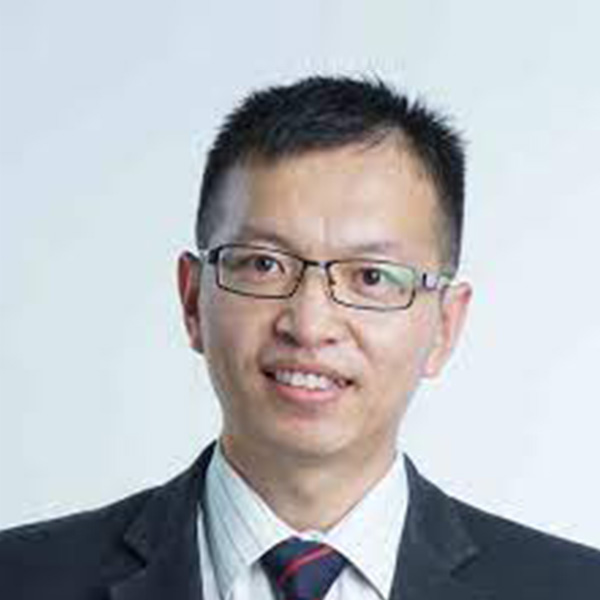
Abstract Long-lived room temperature phosphorescence materials have attracted increasing attention because of their fantastic properties and application potentials. Inspired by the importance of noncovalent interactions such as hydrogen bonding and π-π stacking interactions in supramolecular self-assembly as well as covalent polymerizations, we have prepared functional amorphous systems by integrating suitable chromophore molecules and polymer matrices in order to achieve long-lived room temperature phosphorescence.[1-6] Through rationally combining selected chromophores with polymers noncovalently and covalently, the formations of unique interactions and bonding in the resulted systems could effectively minimize the molecular vibrations and promote the intersystem crossing for enhanced room temperature phosphorescence. These systems show promising applications in displays, imaging, data encryption and information storage. In this talk, I will present our recent research progress about the design, synthesis, mechanism study and applications of polymer-enhanced room temperature phosphorescence systems.
BiographyProf. ZHAO currently holds the Lee Soo Ying Professorship in Nanyang Technological University (NTU), Singapore. He is the deputy head of Division of Chemistry and Biological Chemistry at NTU. His group conducts research in an interdisciplinary area of chemistry and materials with an emphasis on the development of integrated systems for diagnostics and therapeutics, as well as for energy storage and catalysis. Prof. ZHAO has been honored with several national and international recognitions and awards, including the Highly Cited Researcher by Clarivate Analytics in 2018-2021, the Singapore National Research Foundation Investigatorship in 2018, the ACS Applied Materials & Interfaces Young Investigator Award in 2017, the Asian and Oceanian Photochemistry Association Prize for Young Scientists in 2016, the TR35@Singapore Award in 2012, the Singapore National Research Foundation Fellowship in 2010, and UCLA Chancellor’s Award for Postdoctoral Research in 2010. He is the Executive Editor of ACS Applied Nano Materials.
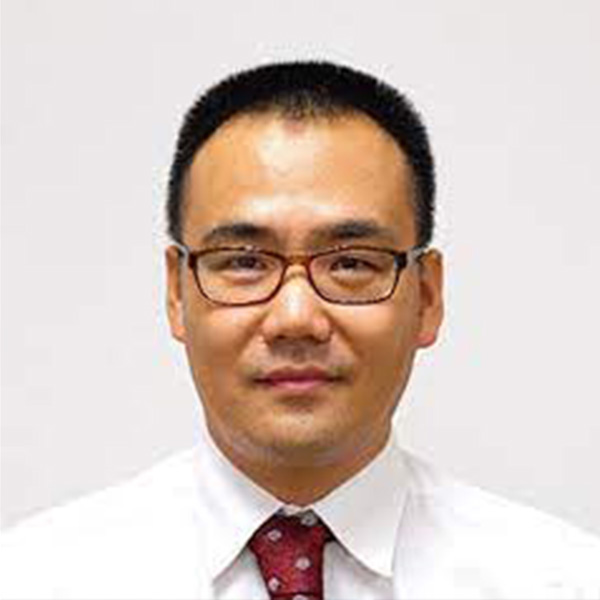
Abstract Fluorescent imaging enables rapid, direct and spatiotemporal visualization of biological events in real time, owing to their high sensitivity, relative safety, and easily handling, and therefore have become robust and reliable tools in monitoring of subcellular protein dynamics and analysis of tumors or pathogen–host interactions in vitro, in vivo and even in pre-clinical practice. The systematic imaging investigation of biomolecules activities in a complicated environment offers great possibility for the in-depth understanding of the biological basis conferring diseases status, and importantly, for the facilitating of new theranostics in living settings. In our group, we established a series of simple and specific small molecules or nano-structure based optical imaging probes to real-time visualize cellular function and activities,[1-5] importantly, the intrinsic mechanisms to involve in potent drug activities and relevant pathways to initiate drug resistance have also been well investigated. References
BiographyProf. XING received his Ph.D. in Chemistry from Nanjing University, China, in 2000. From 2001, he did his postdoctoral work, respectively at HKUST, at Molecular Imaging Program in UCLA, and MIPS at Stanford. In 2006, he moved to Singapore and started his independent research career as Assistant Professor at NTU, where he was later promoted to Associated Professor. In 2019, Prof. XING was awarded full professorship in NTU. So far, Prof. XING is the Fellow of the Royal Society of Chemistry (FRSC), UK, and recipient of Young Innovator Award in Nano-biotechnology (2018) etc. Dr Xing is also serving as the Advisory board member of Bioconjugate Chemistry, Nano-theranostics. His current research interests: Chemical Biology, Biomedical Fluorescent Imaging, and Nano-Medicine.
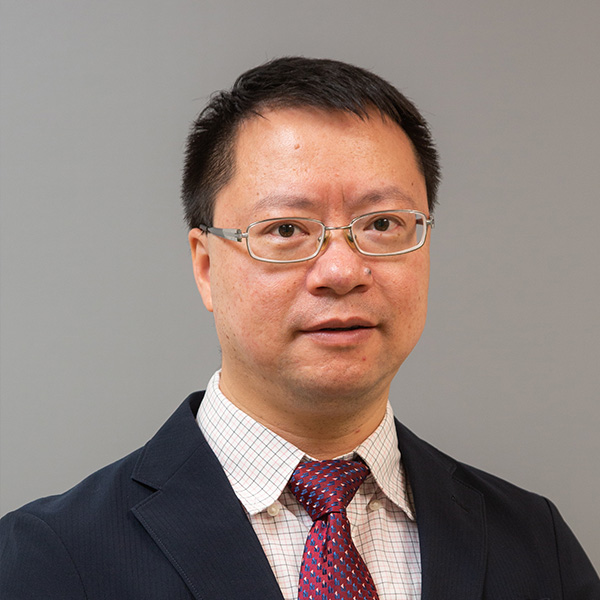
AbstractSolid oxide fuel cells (SOFCs) are promising electrochemical devices for clean power generation, especially for combined heat and power cogeneration. Reducing the operating temperature of SOFC from 800-1000oC to about 400-600oC improves the durability and reduces the cost of SOFC on the one hand, but decreases the actual cell performance on the other hand. As the cathode usually causes the highest overpotential loss in SOFC, efforts have been made in developing nanostructured SOFC cathodes by infiltration or developing new cathode materials. In this talk, research activities conducted at HK PolyU will be presented, including modeling and testing of nanostructured SOFC cathode, development of a series of perovskite oxides, and the thermal expansion offset approach for composite cathode. The future development of SOFC will also be discussed. Keywords: Solid oxide fuel cells; Combined heat and power cogeneration; Oxygen reduction reaction; Cathode; Perovskite; Nanostructure.
BiographyProf. NI received his Ph.D. in Mechanical Engineering from University of Hong Kong (HKU) in 2007. Then Prof. NI stayed in HKU as a Post-doctoral researcher for 2 years, before joining the Hong Kong Polytechnic University as an Assistant Professor in July 2009. Prof. NI was promoted to Associate Professor and then Full Professor. After serving as an Associate Head for BRE for 5 years, he started to serve as an Associate Dean of FCE in July 2021. Prof. NI worked as a Humboldt Fellow at the Forschungszentrum Jülich, Germany in 2017. Prof. NI’s research interests include fuel cells and rechargeable metal-air batteries. In particular, Prof. NI has developed a series of multi-physics models for fuel cells to optimize the fuel cell electrode microstructure and fuel cell stack configuration. He also developed perovskite oxides for use as fuel cell cathodes. He served as an Associate Editor for Science Bulletin in 2015-2017. Currently, he is a Senior Editor for Sustainable Energy Technologies and Assessments (Elsevier) and an Associate Editor for International Journal of Green Energy (Taylor & Francis) and International Journal of Energy Research (Wiley).
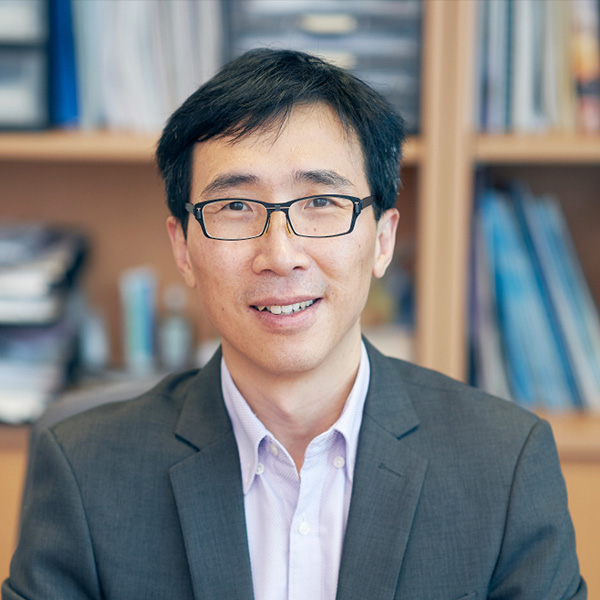
AbstractRechargeable aqueous Zn batteries (AZB) are being widely and extensively studied. In recent few years, there has been tremendous progress in fundamental understanding, battery performance by rational design of electrode materials and electrolytes as well as their interface, and device architectures. So far, the energy density of AZB is still not competitive compared to Li-ion batteries. Among most cathode materials, manganese oxide and related compounds are being mostly investigated. However, the reaction mechanism has been complicated and varies from one report to another report. On the Zn anode side, bare Zn is unstable in a wide pH range. The Zn anode suffers from a few issues, including dendrite growth due to inhomogeneous nucleation and growth, corrosion due to hydrogen evolution reaction, and passivation due to side reactions. Our group has been actively working in design nanostructured electrode materials for secondary batteries and recently focus on rechargeable AZB. This seminar will give a complete story about the evolution of Zn-MnO2 batteries with a focus on the understanding of charge storage mechanism in sulfate electrolytes. It will elaborate some typical strategies for Zn anode stabilization with a focus on mechanistic understanding rather than materials engineering.
BiographyProf. FAN is a professor at the School of Physical and Mathematical Science, Nanyang Technological University (NTU), Director of CN Yang Scholars Programme at NTU, Fellow of Royal Society of Chemistry (FRSC), Thomson Reuters “Highly Cited Researchers” since 2016, Editor-in-Chief of Materials Today Energy, Advisory board member of journals including Materials Today Nano, Energy Environment Science, Advanced Science, Advanced Materials Technology, and eScience.
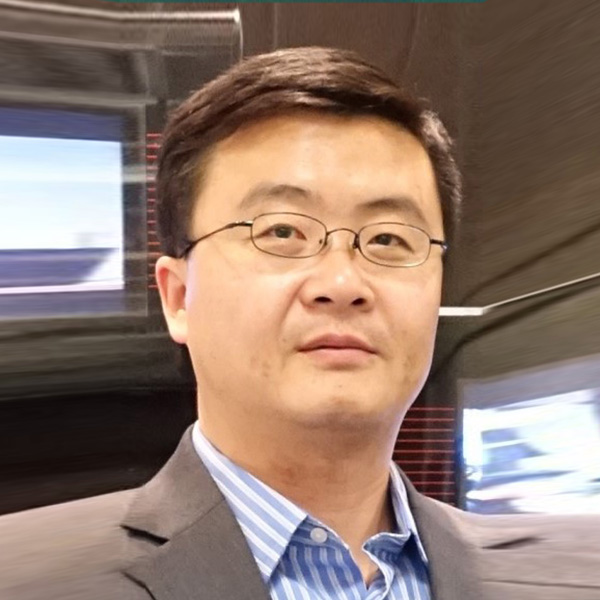
Biography Prof. LI obtained his BS degree in Space Physics from Wuhan University (1994), MS in Electrical Engineering and PhD in Condensed Matter Physics from Iowa State University, U.S.A. (2003). His postdoctoral research in University of California Los Angeles (UCLA) from 2004 to 2007 was on polymer solar cells and LEDs. From 2007 to 2011, he led the printable polymer solar cell R&D in Los Angeles based Solarmer Energy Inc. Prof. LI has a good mix of academic and industrial experience. He was a Research Associate Professor in UCLA before he joins PolyU in August 2016. In 2019, he was promoted to Professor, and now is Sir Sze-Yuen Chung Endowed Professor in Renewable Energy. Prof. LI’s research interests are organic semiconductor, and organo-metal halide hybrid perovskite based thin-film optoelectronic devices. He has done seminal contributions to Printable Solar cells with global reputation. He has published ~140 papers in peer review journals including Nature Materials, nature Photonics, Science, Nature Review Materials etc. His papers have been cited over 59000 times according to Google Scholar, in which 17 papers have over 1000 citations. He is recognized as a Highly Cited Researcher (Materials Science 2014 – 2019; Physics 2017-2018, Chemistry 2018) by Thomson Reuter / Clarivate Analytic, with a H-Index of 71. He is Fellow of Royal Society of Chemistry, UK, and Fellow of The International Society for Optics and Photonics (SPIE).
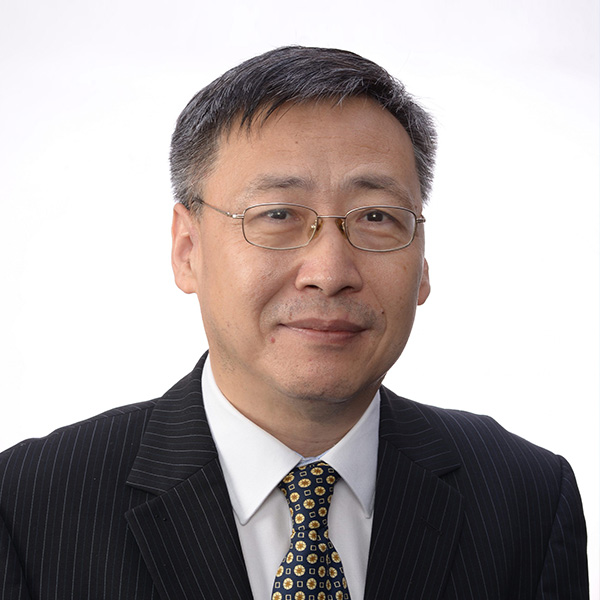
Abstract For both energy and environmental applications, there has been an intensive search for better advanced heterogeneous electrocatalysts of high activity, conversion efficiency, long-term durability and selectivity for a wide variety of chemical reactions. They are now at an important Crossroads. On the one hand, with the steady down-sizing from nanoparticles, clusters and now to single atoms, and the gradual switching from high-cost noble metals to cheap transition metals, there are changes in the bond and coordination environment for each and every atoms involved. These single atoms are not “singles” anymore, and they are actually chemically bonded to the supporting surfaces with various coordination environments, and their catalytic performance is largely controlled by the “marriage” with the substrate surfaces, instead by themselves. On the other hand, for those electrocatalytic reactions involving multiple electron transfers, multiple reaction steps and multiple pathways, single atom catalysts (SACs) have their limitations. There is need to develop strong synergies between single atom and single atom (metal dimers/trimers, which are defined as “married atoms”), and between single atoms with other active centers, including those sub-nano clusters and nanoparticles. In this talk, I will present our latest progress in search for better heterogeneous electrocatalysts, by focusing on the synergies between different active species, with case studies for oxygen reduction reaction (ORR), nitrogen reduction reaction (NRR) and CO2 reduction reaction (CO2RR). For these new heterogeneous electrocatalysts, various in-situ and operando characterizations down to atomic scales, together with computational studies, are important, on top of the conventional experimental studies of catalysts engineering and characterization.
Biography Prof. WANG is Professor of Materials Science and Engineering at the National University of Singapore (NUS), and Principal Scientist II, Institute of Materials Research and Engineering, A*Star, Singapore. He has more than 30 years of experience in research and education of functional materials and materials chemistry. He served the Head of Department of Materials Science and Engineering at NUS for six years (July 2013 - June 2019). Prof. WANG’s current research focuses include: energy materials and devices, 2D materials chemistry, and nanostructured materials for energy and water technologies. John Wang has published >400 papers in prestigious, top international refereed journals. Citations received >31,000, and his H-index=90. John Wang is Clarivate Web of Science Highly Cited Researcher for the past two consecutive years (2020 and 2021). Prof. WANG is elected Academician of the Asia Pacific Academy of Materials (APAM, 2019), Fellow of the Institute of Materials, Minerals and Mining (IOM3, UK), and Fellow of the National Academy of Engineering Singapore (2022).
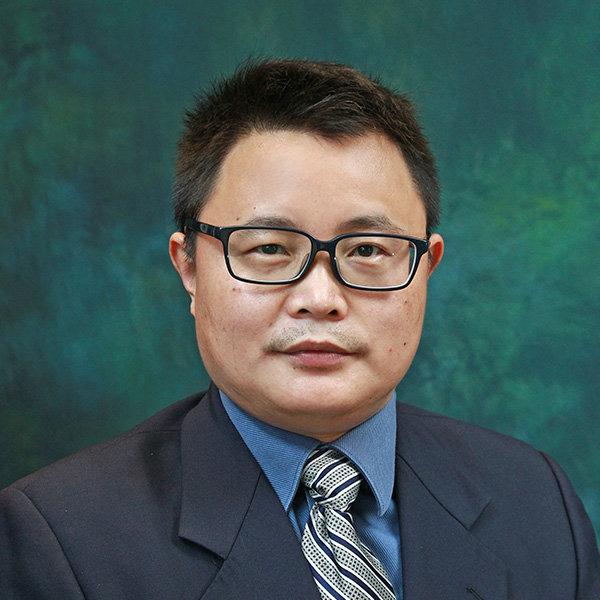
Abstract Natural photosynthesis (NPS) stores solar energy into chemical compounds and is the workhorse in green crops to produce food materials. However, the NPS has low energy efficiency (~1%) and is limited by arable lands, climate, seasons and water supply. Food shortage has long been a big threat since the start of mankind and is in urgent need of a scientific solution. Artificial photosynthesis (APS) mimics the NPS but with higher energy efficiency (~10%) and more simplicity. This talk will present our recent research efforts in pursuit of continuous production of the basic food material – glucose by using microfluidics technology. Although still a long way to go, this research field bears the hope to solve the food shortage problem and may prepare for future space colonization.
Biography Dr ZHANG is currently an associate professor with Department of Applied Physics, Hong Kong Polytechnic University. He received BEng degree in Precision Mechanical Engineering from the University of Science & Technology of China (USTC) in 1994, and Ph.D. degree from School of Electrical & Electronic Engineering, Nanyang Technological University (NTU) in 2006. His research has produced more than 100 journal papers and has been extensively reported by public media. His current research interests cover mainly microfluidics, artificial photosynthesis, biomimetics and green energy.
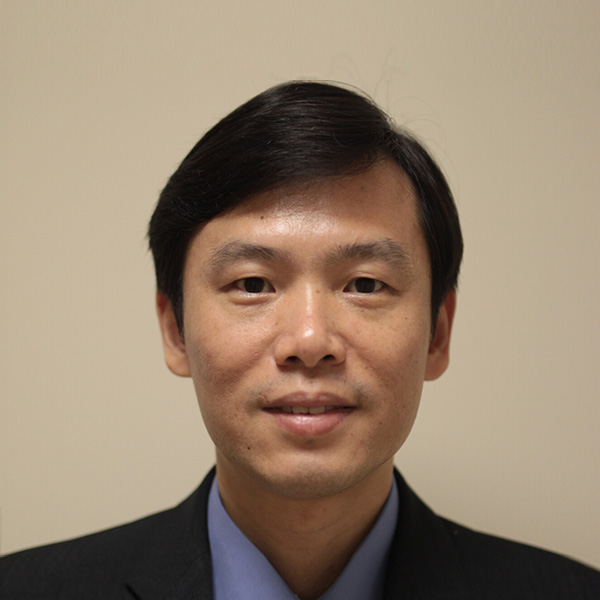
Abstract Skin offers an easily accessible site for drug administration as well as for health signal monitoring, with non-invasiveness or minimal-invasiveness, convenience, and good patient compliance. Transdermal theranostics promises for personalized, home-based, and long-term management of chronic diseases, and is expected to change the landscape of healthcare profoundly. In this talk, I will share our works on transdermal drug delivery and sensing biomarkers in skin interstitial fluid. For example, we have recently developed transdermal photothermal-pharmacotherapy to remodel adipose tissue for obesity and metabolic disorder.
Biography Prof. CHEN is a professor in the school of chemical & biomedical engineering and Lee Kong Chian School of Medicine at Nanyang Technological University, and also the chief engineering for Skin Research Institute of Singapore. He is a fellow of Royal Society of Chemistry and a global highly cited researcher. His research interest includes theranostic technologies and nanomaterials.
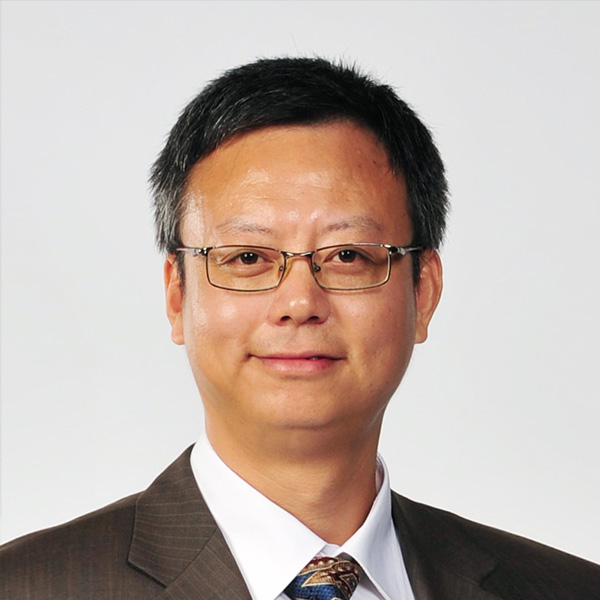
Abstract In this talk, I will summarize the recent research on phase engineering of nanomaterials (PEN) in my group, particularly focusing on the rational design and synthesis of novel nanomaterials with unconventional phases for various promising applications. For example, by using wet-chemical methods, for the first time, we have successfully prepared novel Au nanostructures (e.g., the hexagonal-close packed (hcp) 2H-Au nanosheets, 4H-Au nanoribbons, and crystal-phase heterostructured 4H/fcc and fcc/2H/fcc heterophase Au nanorods), epitaxially grown metal nanostructures on the aforementioned unconventional Au nanostructures and 2H-Pd nanoparticles, and amorphous/crystalline heterophase Pd, PdCu, Rh and Rh alloy nanosheets. In addition, by using gas-solid reactions, metastable 1T'-phase group VI transition metal dichalcogenides (TMDs), e.g., WS2, WSe2, MoS2, MoSe2, WS2xSe2(1-x) and MoS2xSe2(1-x), have been prepared. Moreover, the phase transformation of TMDs during our developed electrochemical Li-intercalation process has also be observed. Impressively, the lithiation-induced amorphization of Pd3P2S8 has been achieved. Currently, my group focuses on the investigation of phase-dependent physicochemical properties and applications in catalysis, (opto-)electronic devices, clean energy, chemical and biosensing, surface enhanced Raman scattering, waveguide, photothermal therapy, etc., which we believe is quite unique and very important not only in fundamental studies, but also in future practical applications. Importantly, the concepts of phase engineering of nanomaterials (PEN), crystal-phase heterostructures, and heterophase nanomaterials are proposed.
Biography Prof. ZHANG obtained his B.S. and M.S. degrees at Nanjing University in China in 1992 and 1995, respectively, and completed his Ph.D. with Prof. Zhongfan Liu at Peking University in China in July 1998. He joined Prof. Frans C. De Schryver’s group at Katholieke Universiteit Leuven (KULeuven) in Belgium as a Research Associate in January 1999. Then he moved to Prof. Chad A. Mirkin’s group at Northwestern University as a Postdoctoral Fellow in July 2001. He started to work at NanoInk Inc. (USA) as a Research Scientist/Chemist in August 2003. After that, he worked as a Senior Research Scientist at Institute of Bioengineering and Nanotechnology in Singapore from November 2005 to July 2006. Then he joined the School of Materials Science and Engineering in Nanyang Technological University (NTU) as an Assistant Professor. He was promoted to a tenured Associate Professor on March 1, 2011, and Full Professor on Sept. 1, 2013. In 2019, he joined the Department of Chemistry in City University of Hong Kong as a Chair Professor, and currently he is the Herman Hu Chair Professor of Nanomaterials.
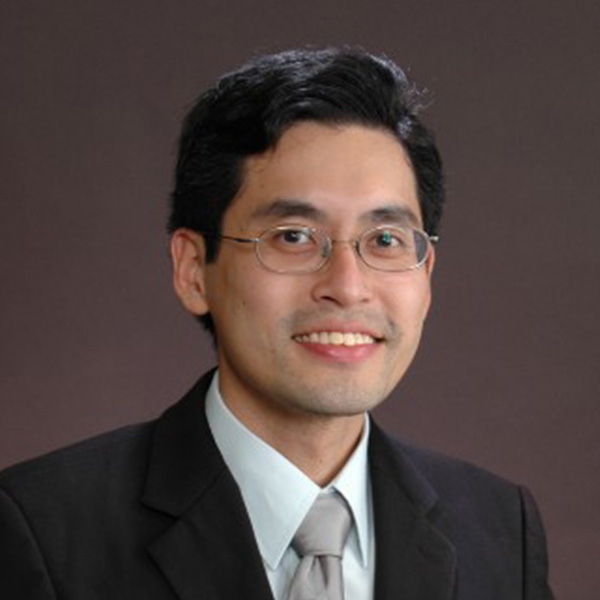
Abstract Rapidly aging societies, demands for improved organ functions and repair of damaged tissues has led to the use of synthetic materials in different parts of the human body. Traditional covalent chemistry has served us well in terms of the design of materials. The future of soft biomaterials demands ease of synthesis, multi-functionality and efficacy. Supramolecular hydrogels are part of the next-generation of materials to enter the biomedical arena. These materials are three-dimensional entities built from crosslinking agents which bond non-covalently (via hydrogen bonds, π–π stacking and van der Waals interactions) to produce fibers and crosslinking among fibers. Thermogelling polymers are a unique class of materials that have the ability to undergo a sol-to-gel transition when the temperature of the solution is raised. This change is reversible and has been the subject of intense research in the last decade. These materials have been used for drug delivery, gene delivery and tissue engineering. New design strategies for thermogelling polymers have emerged in recent years. The properties of these materials are vastly different from their covalent counterparts and the exciting developments are summarized in this talk.
Biography Prof. LOH completed his basic and postgraduate studies at the National University of Singapore. A polymer chemist by training, he is currently the Executive Director of the Institute of Materials Research and Engineering (IMRE), A*STAR. As a pioneer in the area of biodegradable thermogels, he is highly knowledgeable in developing these materials for various applications spanning biomedical, engineering, cosmetics, personal care and food. His scientific contributions have earned him the position of Fellowship in both Fitzwiliam College in the University of Cambridge as well as in the Royal Society of Chemistry. He is also the current President and member of the Executive Committee of the Singapore National Institute of Chemistry. With his extensive experience in authoring >200 journal papers, 38 patents and know-hows, >30 book chapters and 7 books, he currently sits on several editorial boards of international journals as an expert in his area. He was recently given the Highly Cited Researcher Award by Clarivate Analytics. He has also successfully helped in the commercialization of 8 different products and is always interested in the translation of science to products.
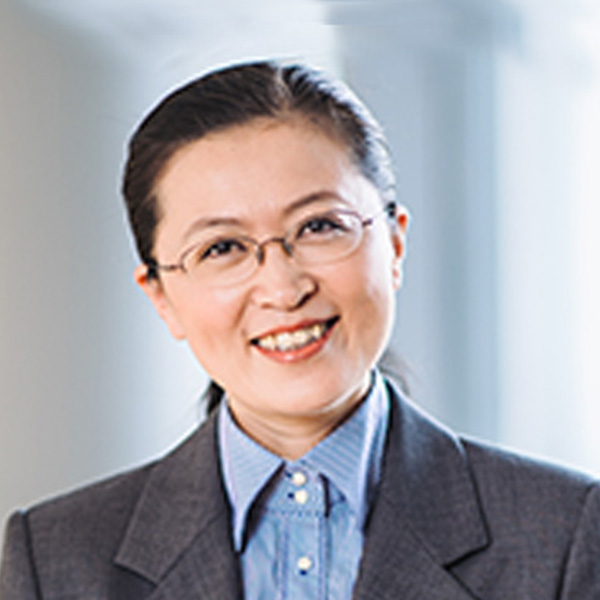
Abstract The recent years have witnessed the fast grow of fluorogens with aggregation-induced emission characteristics (AIEgens) in biomedical research. The weak emission of AIEgens as molecular species and their bright luminescence as nanoscopic aggregates distinguish them from conventional organic luminophores and inorganic nanoparticles, making them wonderful candidates for many high-tech applications. In this talk, we summarize our recent AIE work in the development of new fluorescent bioprobes for biosensing and imaging. The simple design and fluorescence turn-on feature of the molecular AIE bioprobes offer direct visualization of specific analytes and biological processes in aqueous media with higher sensitivity and better accuracy than traditional fluorescence turn-off probes. The AIE dot probes with different formulations and surface functionalities show advanced features over quantum dots and small molecule dyes in noninvasive cancer cell detection, long term cell tracing, and vascular imaging. In addition, our recent discovery that AIEgens with high brightness and efficient reactive oxygen species generation in aggregate state further expanded their applications to image-guided cancer surgery and therapy. References
Biography Prof. LIU received her BS degree and Ph.D. degree from Nanjing University and National University of Singapore, respectively, before her postdoctoral training at University of California, Santa Barbara. She joined NUS in late 2005, where she is currently the Provost’s Chair Professor, Head of Department of Chemical and Biomolecular Engineering, and Senior Vice Provost in Faculty & Institutional Development. For her research focusing on organic nanomaterials for biomedical and energy applications, Prof. LIU has received many highly prestigious awards. She is the Fellow of Singapore Academy of Engineering, Asia-Pacific Academy of Materials, the Royal Society of Chemistry, and the US National Academy of Engineering.
Abstract Two-dimensional (2D) layered materials like graphene and transition metal dichalcogenides (TMDs) have been considered as promising building blocks for the next generation nanoelectronic devices, showing great potentials to extend the scaling limits existing in silicon based complementary metal-oxide-semiconductor field-effect-transistors (CMOS-FET) as well as to serve as a high mobility alternative to organic semiconductors for flexible electronic and optoelectronic devices. However, the existence of large contact resistance at the interface between the TMDs semiconductor and any bulk (or 3D) metal drastically restrains the intrinsic transport properties of materials and the performance of realistic devices. Thus, it is a crucial to optimize the contacts and lower the contact resistance between 2D semiconductors and metal electrodes. In this talk, I will summarize and discuss our recent work for the development of scalable Ohmic contact engineering approaches to 2D materials that can be easily integrated into existing semiconductor device production processes. We will focus on the Ohmic contact to 2D materials enabled by surface charge transfer doping induced semiconductor-to-metal phase transition, and the demonstration of high performance 2D materials based electronic devices with Ohmic contact.
Biography Prof. CHEN is currently a Full professor in both the Chemistry Department and Physics Department at the National University of Singapore (NUS). He received his Bachelor degree in Chemistry from Nanjing University (China) in 2001 and his PhD degree from the Chemistry Department at NUS in 2004. His current research interests include molecular-scale interface engineering for organic, graphene and 2D materials based electronics and optoelectronics, and interface-controlled nanocatalysis for energy and environmental research.
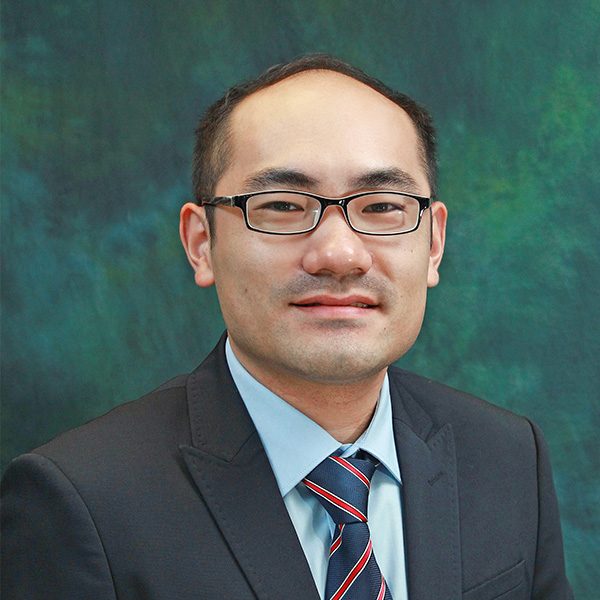
Abstract Two-dimensional (2D) materials are intriguing for wide applications such as electronics, optics, energy, catalysis, and so forth, which has rapidly fueled the development of nanoscience and technology in recent decades. Because of their reduced dimensionality, large specific surface area, and atomic thickness, various novel behaviors and properties emerged, though the synthesis, preparation, and modification of 2D materials remain challenging on the atomic scale. The integration and interfacing with 2D materials in real device applications have also numerous remaining issues. Therefore, developing precise approaches down to an atomic scale is highly desirable for 2D materials. In this presentation, we will address the mechanical, electrical, and optical properties of 2D materials that could be modulated by a few physical/chemical approaches, which are guided by our in situ transmission electron microcopy on 2D materials.
Biography Dr ZHAO is assistant professor in Applied Physics Department of Hong Kong Polytechnic University. His main research area is low-dimensional physics especially two-dimensional materials and in situ electron microscopy. He has applied and developed in situ mechanical/electrical/heating/beam environmental tests on carbon nanotubes, Si nanowires, graphene and various 2D materials, and achieved in-depth understanding in their atomic structures, chemistry and physical properties, particularly the structure-property relationships. The atomic structures and dynamical responses have been observed/revealed by advanced in situ transmission electron microscopy. He has published over 80 papers in Science, Nature Communications, PNAS, PRL, Adv Mater, Nano Lett., ACS Nano, JACS, etc. as first/corresponding authors. His current H-index reaches 33 (Google Scholar). He has also obtained NSFC Youth Excellence Project (HK&Macau) (2019), Nanyang Assistant Professorship (Singapore) (2017) and fellowships from the DAAD (Germany) (2012) and ibs (Korea) (2014).

Abstract The development of two-dimensional semiconductors based high-performance electronic devices is hampered by various challenges, which include large-scale growth of high-quality 2D semiconductors, good interface with high-k dielectrics, low metal contact resistances, controllable doping and stable 2D materials with high carrier mobility. In this talk, we present our understanding of tuning carrier mobility and interface properties of 2D semiconductor. Firstly, we show that the carrier mobility of MoS2 can be significantly increased by bulged substrates, which create ripples in the MoS2 leading an enhancement in its dielectric constant and a much-suppressed electron-phonon scattering. Secondly, we report that interfacial hydrogenation is an effective way to improve the interface properties of high-k dielectrics/MoS2, where the hydrogen can selectively passivate the dangling bonds at high-k dielectrics and intrinsic defects in MoS2 while leave the pristine MoS2 intact. Finally, based on the high-throughput first-principles calculate, we identify various promising molecule crystal based high-k dielectrics for high-performance interface with 2D semiconductors. References
Biography Dr YANG is an Assistant Professor at the Department of Applied Physics, The Hong Kong Polytechnic University. Dr YANG obtained his Ph. D degree and had the postdoctoral training at the National University of Singapore. He then had worked as Scientist at Institute of Materials Research and Engineering before joined PolyU. Dr YANG’s current research interest is mainly on high-throughput first-principles calculations and machine learning technologies accelerated material innovation. So far, he has published more than 130 papers on peer-reviewed journals, filed three PCT patents and contributed to one book chapter.
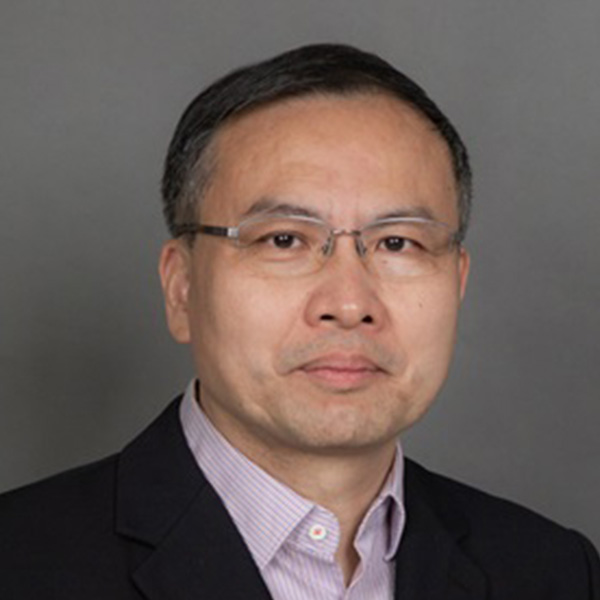
Abstract Humankind is generating digital data at an exponential rate. These data are typically stored using electronic, magnetic or optical devices, which require large physical spaces and cannot last for a very long time. Here we report the use of peptide sequences for data storage, which can be durable and of high storage density. With the selection of suitable constitutive amino acids, designs of address codes and error-correction schemes to protect the order and integrity of the stored data, optimization of the analytical protocol and development of a software to effectively recover peptide sequences from the tandem mass spectra, we demonstrated the feasibility of this method by successfully storing and retrieving a text file and the music file Silent Night with 40 and 511 18-mer peptides respectively. This method for the first time links data storage with the peptide synthesis industry and proteomics techniques, and is expected to stimulate the development of relevant fields. This work was supported by Research Grants Council Research Impact Fund (Grant No. R5013-19F).
Biography Prof. YAO received his BSc and MSc degrees both from Fudan University, and PhD degree from The Hong Kong University of Science and Technology. He underwent postdoctoral training with Prof. Catherine Fenselau at University of Maryland and with Prof. Carol Robinson FRS at University of Cambridge, and is currently a professor in Department of Applied Biology and Chemical Technology, The Hong Kong Polytechnic University. Prof. YAO conducts interdisciplinary research in mass spectrometry, analytical chemistry, chemical biology, -omics, bioinformatics, etc. His current research interests involve developing and applying mass spectrometry-based approaches to address fundamental and applied problems in chemistry, biology, food safety, information science, etc. Prof. YAO is the president of The Hong Kong Society of Mass Spectrometry, panel member of Hong Kong Research Grants Council, and editorial board members of several international journals.
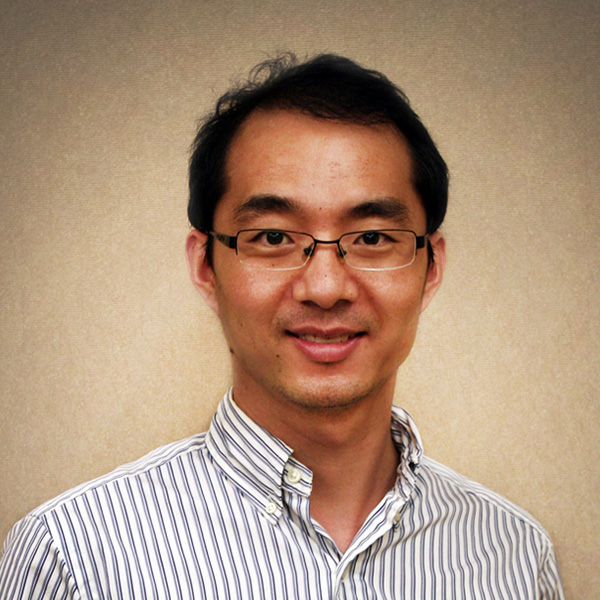
Abstract A large database is desired for machine learning (ML) technology to make accurate predictions of materials physicochemical properties based on their molecular structure. When a large database is not available, development of proper featurization method based on physicochemical nature of target proprieties could also improve predictive power of ML models even if with smaller database. We have developed two new featurization methods: volume occupation spatial matrix and heat contribution spatial matrix. Both of them are able to improve accuracy in prediction of energetic materials’ crystal density (ρcrystal) and solid phase enthalpy of formation (Hf,solid) using a database including only 451 energetics. Their mean absolute errors reduced from 0.048 g/cm3 and 24.67 kcal⁄mol to 0.035 g/cm3 and 9.66 kcal⁄mol, respectively. By leave-one-out-cross-validation, the newly developed ML models could be used to determine performance of most kinds of energetic materials expect cubanes. Our ML models are applied to predict ρcrystal and Hf,solid of CHON-based molecules of that 1.5 million sized PubChem database, and screen out 29 candidates with competitive detonation performance and reasonable chemical structures. With higher level many-body indexes to be incorporated, spatial matrices are promising ML simulation tools to provide even better predictions in more fields of materials science.
Biography Dr LI received his B.Sc, M.Sc, and PhD in chemistry from Nankai University, Peking University, and University of Wisconsin, respectively. After working as a postdoc in Northwestern University, he joined in Nanyang Technological University. Currently, he is an associate professor in school of materials science and engineering and his research interests are theoretical and computational material science. He has been focused on (1) Heterogeneous Catalysis; (2) Machine Learning in Materials Discovery; (3) Assembly of Nanostructures.
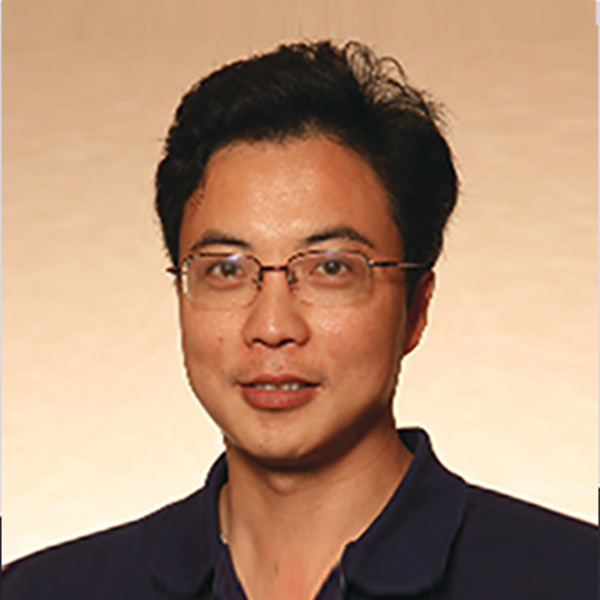
Abstract Prof. ZHANG obtained his B.S. at Nanjing University in China in 1992, MS in physical organic chemistry (organic solid lab) at Institute of Chemistry, Chinese Academy of Sciences in 1998, MS in organic chemistry at University of California, Los Angeles (USA), and completed his Ph.D. in chemistry at University of California Riverside in 2007. Then, he worked as postdoctoral fellow at Northwestern University (Oct. 2007 –Dec. 2008). Since Jan. 2009, he joined School of Materials Science and Engineering at Nanyang Technological University (NTU, Singapore) as an Assistant Professor. On Mar 1st, 2014, he has promoted to Associate Professor with tenure. On Sep 1st 2020, he moved to Department of Materials Science and Engineering at City University of Hong Kong as a tenured full professor. Currently, he is an associate editor of J. Solid State Chemistry, the International Advisory Board member of Chemistry – An Asian Journal, the Advisory board member of Journal of Materials Chemistry C, the Advisory board member of Materials Chemistry Frontiers, the Advisory board member of Inorganic Chemistry Frontiers, the Advisory board member of Aggerate, and the Advisory board member of Materials Advances. Also, he is Guest Editors of CCS Chemistry (2020-2021), Advanced Materials (2020-2021), J Mater Chem C (2020-2021, 2017-2018), Mater. Chem Front (2019-2020), Inorganic Chemistry Frontiers (2016-2017, 2017-2018). In 2018, 2019, 2020 and 2021, he has been recognized as one of highly-cited researchers (top 1%) in cross-field in Clarivate Analytics. He is a fellow of the Royal Society of Chemistry. Currently, his research focuses on carbon-rich conjugated materials and their applications. Till now, he has published >450 papers and 5 patents (H-index: 96).
Biography
Organic cocrystals based on noncovalent intermolecular interactions (week interactions) have aroused enormous interest due to their unpredicted and versatile chemicophysical properties and charming applications (Figure 1). In this presentation, I will highlight recent emerging research of organic cocrystals on reducing aggregation-caused quenching (ACQ) effect, turning transport characteristic, and mechanic(solvo)-stimulus responsive behaviors.
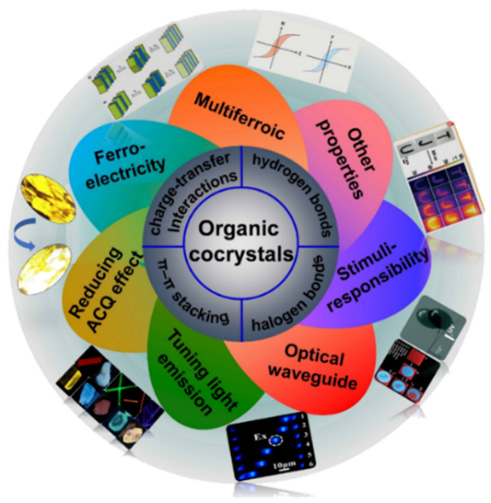 Figure 1 Emerging properties and applications of organic co-crystals
Figure 1 Emerging properties and applications of organic co-crystals

Abstract Emerging human-machine interface requires the integration of stimuli responsive materials and devices, such as electronic textiles or wearables for augmented reality. The challenges of simultaneously achieving functional electronic properties and physical properties including softness, toughness and the self-healability, have posed significant challenges to conventional electronic materials. Therefore, efforts have been made to prepare designer soft materials based on elastomers and nanocomposites to cater for a myriad of diverse applications. We focus on the synthesis and modification of polyurethane based supramolecular network for highly stretchable elastomer and subsequently the incorporation of conductive or insulative fillers for enhanced functionalities. Soft energy transducers are compliant devices that allow the conversion of energy from one form to another, e.g. from electrical to mechanical energy or vice versa. Preparation of dielectric elastomers and nanocomposites for electrically induced mechanical motion in the form of soft actuation will be discussed. Self-healable dielectric elastomer actuators are demonstrated [1]. Using highly stretchable elastomers, we prepare stretchable and self-healable nanogenerator that converts mechanical energy into electrical signal for human-machine interface application [2]. Additional of elastomer binders was also used to prepare stretchable nanofiber network that enabled development of stretchable nanogenerators. Incorporation of charge trapping perovskite particles in the nanofiber network has helped to improve the output performance [3]. Progress on soft nanocomposites for effective heat management will also be discussed.
Biography Prof. LEE is the President’s Chair Professor of Materials Science & Engineering at Nanyang Technological University (NTU), Singapore. She is the Dean, Graduate College and Associate Provost (Graduate Education). Her current research focuses on developing stretchable elastomeric composites for electronics and energy devices, human-machine interfaces, sensors and actuators, and hybrid materials for soft robotics. She received the 2015 TechConnect Innovation Award in Washington, Nanyang Research Award in 2016 and Nanyang Award for Innovation and Entrepreneurship Award in 2017. She was awarded the 2016 NRF Investigatorship and listed as a Highly Cited Researcher by Clarivate Analytics in 2018-2021. Her election as the National Academy of Inventors Fellow in 2020 is the highest professional distinction accorded solely to academic inventors. Currently she is the Senior Editor of ACS Energy Letters and serves on the editorial advisory board for several journals.
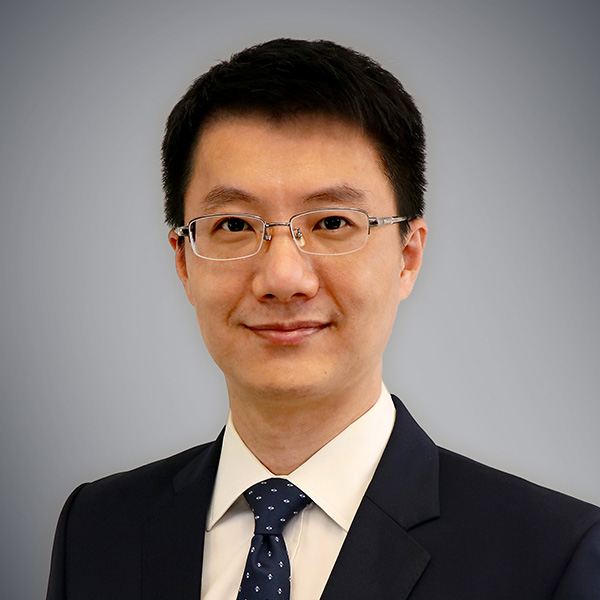
Abstract Wearable electronics plays an important role in the realization of health monitoring and rehabilitation, Internet of Things (IoTs), and soft robotics. These wearable devices and systems should be highly flexible, stretchable and even washable. In addition, they should be comfortable to wear in a long term. This talk will discuss the recent development of conductive textile materials and their applications in wearable electronics. In particular, we will discuss 1) the development of highly conductive, flexible and washable conductive fibers, yarns and fabrics through polymer-assisted metal deposition (PAMD), that can be used for a wide range of wearable sensory and energy-storage uses; and 2) the development of highly permeable stretchable conductors, namely liquid metal fiber mat (LMFM), which enables long-term wearable and 3D monolithic stretchable electronics. References
Biography Prof. ZHENG is currently Full Professor at the Institute of Textiles and Clothing (ITC), Associate Director of Research Institute for Intelligent Wearable Systems, Lead Investigator of Research Institute for Smart Energy (RISE) at The Hong Kong Polytechnic University. His research interests include surface and polymer science, nanofabrication, flexible and wearable electronics, energy conversion and storage. Prof. Zheng received his B. Eng. in Chemical Engineering at Tsinghua University in 2003, and PhD in Chemistry at University of Cambridge in 2007 (Supervisor: Prof. Wilhelm T. S. Huck). In 2008, he worked as postdoctoral researcher with Prof. Chad A. Mirkin at Northwestern University in the USA. He joined ITC as Assistant Professor in 2009, and was promoted to tenured Associate Professor in 2013 and Professor in 2017. He has published ~150 papers in high-impact international scientific journals including Science, Nat. Mater., Nat. Comm., Adv. Mate., JACS, Angew. Chem.. He also files 25+ patents and is recipient of more than 15 academic awards. He serves as Guest Editor of Advanced Materials and Small, and Editor-in-Chief of EcoMat, a flagship open-access journal in green energy and environment published by Wiley. He is elected Founding Member of The Young Academy of Sciences of Hong Kong (2018), Chang Jiang Chair Professor by the Ministry of Education of China (2020), and Senior Research Fellow of the University Grant Commission of Hong Kong (2021).
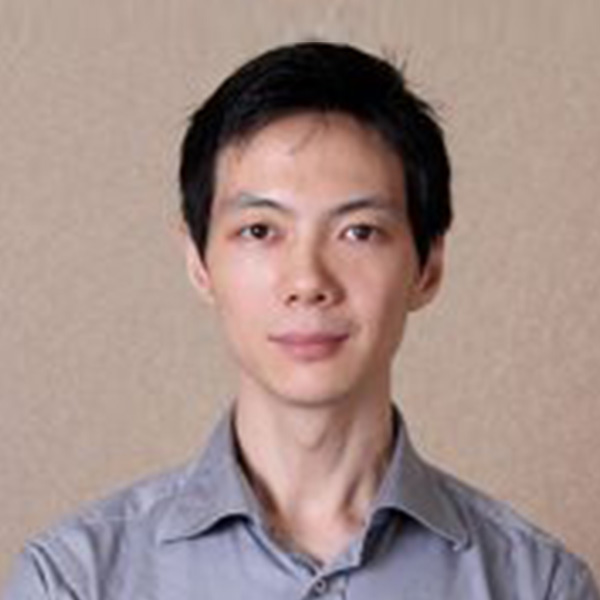
Abstract The industrial synthesis of ammonia (NH3), a key feedstock for synthetic fertilizer, is relying on traditional Haber-Bosch approach under extremely harsh conditions (100−200 bar and 400−500 °C). Nitrogen fixation via electrocatalytic process provides an intriguing route at ambient conditions, potentially realizing a sustainable approach when driven by renewable electricity (wind power, hydroelectric power, etc.). In this presentation, we will discuss our recent works on the electrocatalytic processes of nitrogen oxidation, nitrogen reduction, and urea synthesis. The role of new catalyst design and analysis of the reaction pathway will be presented.
Biography Prof. YAN is currently a professor in School of Materials Science and Engineering in Nanyang Technology University. He obtained his BS in Materials Science and Engineering, Nanjing University. He finished his PhD from Materials Science and Engineering Department of State University of New York at Stony Brook. After that, He joined the Materials Science and Engineering Department of Rensselaer Polytechnic Institute as a postdoctoral research associate. He joined School of Materials Science and Engineering of Nanyang Technological University as an assistant professor in early 2008 and became a Professor in 2018. He is currently the vice chair of the Electrochemical Society, Singapore Section. He is a fellow of Royal Society of Chemistry Since 2018. He is a highly cited researcher in Materials Science for 2018, 2019, 2020 and 2021, indicated by web-of-science. He has published > 300 papers (with a total citation of > 33000 and a h-index of 96) on the research area: (1) battery development; (2) electronic waste recycling, (3) thermoelectric materials and (3) electrocatalytic process for energy conversion.
You are welcome to join the PolyU 85th Anniversary FAST Workshop Series Hong Kong-Singapore Bilateral Workshop – Functional Materials Hosted by the Faculty of Applied Science and Textiles, The Hong Kong Polytechnic University